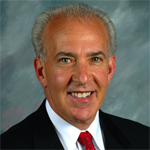
Image Credit: iQoncept/shutterstock.com
When deciding where to locate a rheumatology practice, you need to do your homework. There are many factors to ponder, including accessibility, population demographics, competition, need, costs and whether a building meets your needs.
First and foremost, it’s important that patients can easily get to and find your practice. Randy Eigen, first vice president, CBRE New Jersey, Saddle Brook, N.J., says it’s key to have public transportation stops near a practice in urban areas. In suburban areas, however, vehicular access is most important, and highway access allows for a greater geographic radius of patients. Typically, a 25-minute ride is the maximum distance patients will travel.
But traffic is a double-edged sword, Mr. Eigen points out. The greater the traffic in an area, the more prospective patients are located in that area. At the same time, however, sitting idle in a car is frustrating and can deter patients from returning.
Stephen Kaufman, a licensed real estate salesperson specializing in commercial real estate for Friedland Realty Advisors, in Harrison, N.Y., says a physician must also consider whether they want a retail presence or want to be located in an office building. “If the rheumatologist is looking for a retail presence, visibility is very important,” he says. “If the doctor would like to be in a professional office building, it is most important that patients can easily find the building.”
In addition, parking must be available and convenient to the building, because walking any distance can be difficult for some patients. In urban settings, parking may be less important if there is adequate public transportation.
Aesthetics go a long way to convey the practice’s attitude & help to attract desirable employees.
Further, a practice’s physical building should be easily accessible. Is there a ramp? Are there enough elevators in the building so patients aren’t waiting long? These factors all play into a location’s desirability, Mr. Kaufman says.
Alana B. Levine, MD, rheumatologist, Hospital for Special Surgery (HSS), New York, says patients with disabilities can be transported from their homes to HSS via ambulatory service, car service or public transportation.
Population Demographics

Mr. Eigen
Of course, it’s essential to make sure there are enough patients in an area who need your services. Mr. Eigen points out that the U.S. Bureau of Labor Statistics can provide demographics, including the breakdown of a population by age bracket and income—two valuable considerations.

